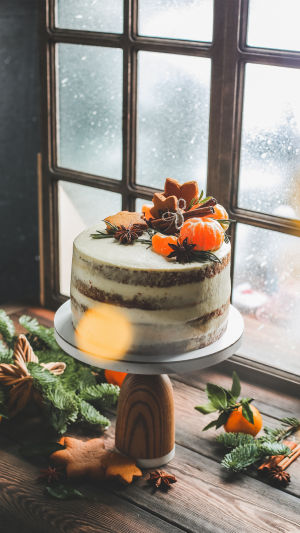Flowers have an everlasting charm, bringing joy to life, and during the holiday season, the tradition of gifting flowers and presents thrives.
However, floral design isn't just about aesthetics; it can also blossom into delectable floral cakes.
The fusion of flower creativity with cake design offers a vast realm of possibilities, akin to the traditional flower arrangement's foundation in a cake's embryo. It's a vibrant competition of various flower colors, turning the cake into a visual delight.
While the cake itself may not be consumed, it surpasses framed flowers in vividness and realism, exuding its own fragrance and contributing to a warm and romantic birthday ambiance. For children, a digital form of the cake, both healthy and trendy, can be a hit. Themes in green and pink represent youthfulness and energy.
Now, let's delve into the process of creating this floral masterpiece. The ingredients include 5 eggs, 90g low-gluten flour, 50ml milk, 50ml salad oil, and 80g caster sugar (divided into 50g for egg whites and 30g for egg yolks). The steps are as follows:
Begin by separating egg yolks from whites. Beat the egg whites with an electric mixer until coarse peaks form.
Gradually add sugar to the egg whites, beating until fine bubbles appear. Continue this process until dry peaks form.
In a separate bowl, beat egg yolks and granulated sugar until light in color. Add milk and oil while mixing.
Sift in the flour, ensuring a smooth and particle-free mixture.
Add the meringue to the egg yolks in three batches, gently mixing with a rubber spatula.
Pour the batter into cake molds, tapping gently to release air bubbles.
Bake in a preheated oven at 170 degrees for 40 minutes. Once done, invert the cakes onto a rack to cool before unmolding.
To assemble the floral cake, slice the baked and cooled cake. Between each layer, spread whipped cream and diced fruit. After stacking the layers, a simple layer of cream on top completes the base. Now, it's time to adorn the cake with flowers.
The process of flower selection and preparation is crucial. Clean the flowers and wrap the foil around the stems before beginning. The easiest decoration involves placing the flowers directly on the cake's surface. Create a basic composition, allowing your creativity to shape the desired image. Larger flowers can be strategically placed to dominate the picture and serve as focal points.
For a more intricate arrangement, employ floral arranging tips to elevate the cake's aesthetics. This slightly challenging technique involves making the flower material stand up, adding depth to the design. By combining flowers and leaves, paying attention to staggered heights and creating a sense of stretch, an impressive and visually appealing effect can be achieved.
In essence, floral creativity extends beyond visual appeal, transforming cakes into delightful experiences. The fusion of vibrant colors, fragrant blooms, and delectable flavors enhances celebrations, creating memorable moments. Whether a simple arrangement or a more intricate display, floral cakes bring a touch of nature's beauty to the art of baking and gifting.





